Sometimes life gets in the way, and we miss the traditional planting seasons. If that is you, don’t worry. July is still a fantastic time to sow and grow many different legumes. But before you start sticking seeds in the ground, it is important to understand what can still thrive this late in the season. So, we pulled together a handy guide. Read on to discover nine legumes you can still plant in July.
Snap Beans
These popular beans are also known as green beans. Snap beans (Phaseolus vulgaris) come in bush and pole varieties, which makes them a versatile choice for any garden.
The good news is that they are also very beginner friendly. Find some well-draining soil and directly sow the seeds approximately 1 inch deep. Allow 3 inches of space between the seeds. They thrive in full sun, so pick a sunny spot in your garden. Make sure to keep the soil consistently moist to support their growth.
Green beans take up to 70 days to mature. So, as long as you plant them in July and have a medium to long growing season, you will have plenty of time. Harvesting snap beans (or green beans) is easy. Remove them when the pods are firm but not overly mature.
Green beans are perfect when lightly steamed, stir-fried, or added to salads. But feel free to experiment and try different preparations. A popular alternative option is to pickle the green bean harvest (known as dilly beans in many parts of the country).
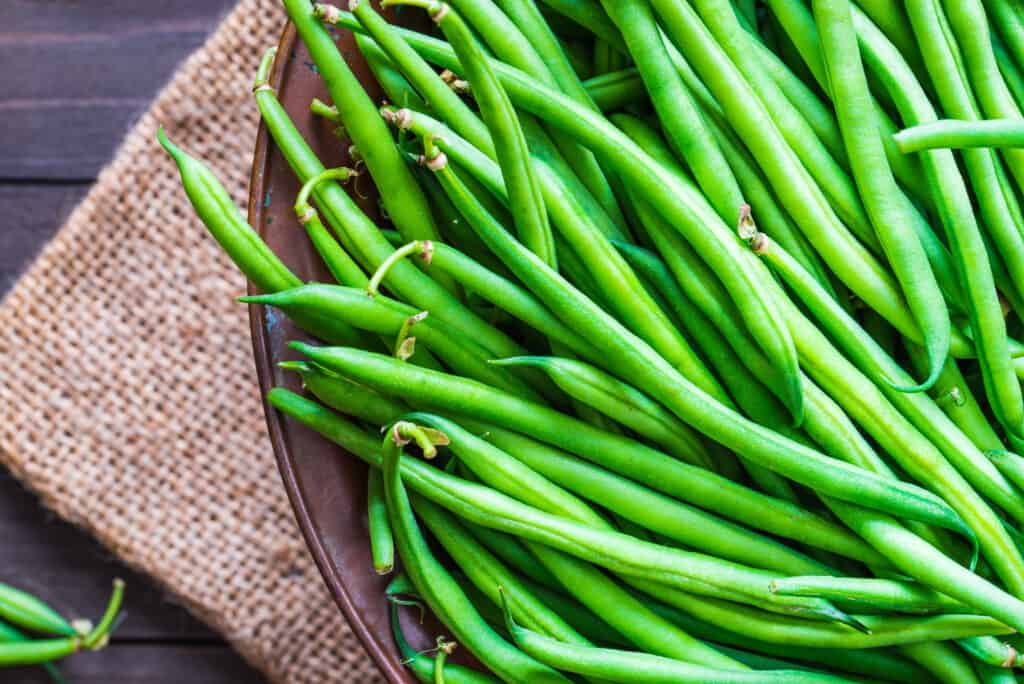
Green beans are a favored plant in many gardens since they grow fairly quickly and easily. They are even a beginner-friendly plant.
©leonori/Shutterstock.com
Lima Beans
This legume garners a mix of emotions from people. Either you love them or hate them. There doesn’t seem to be much in between. But the good news is that lima beans (Phaseolus lunatus) love warm weather and require well-drained soil.
Plant the seeds 1 inch deep and space them 6 inches apart. These legumes thrive in full sun but can tolerate occasional partial shade. Regular watering is essential to maintain consistent soil moisture. They can take up to 90 days to mature. So, if you are in a colder climate, July may be cutting it close.
Harvest lima beans when the pods are plump, and the seeds have developed. Add lima beans to stews, soups, or prepare them as a side dish.

Many people wrinkle their noses at the thought of eating lima beans. But when prepared well, they can be quite tasty.
©Michelle Lee Photography/Shutterstock.com
Peas
Peas (Pisum sativum) are a delightful legume to grow in your garden. They grow rather quickly and produce flavorful pods.
Sow the seeds roughly 1 inch deep and space them 2-4 inches apart. If you’re growing climbing varieties, provide them with support structures. Peas prefer cool weather, so choose a location that receives full sun in the morning and partial shade in the afternoon. Regular watering, especially during flowering, is crucial for successful growth.
Harvest peas when the pods are well-filled but still tender. This versatile ingredient can be used in salads and pasta dishes or enjoyed on its own as a snack.
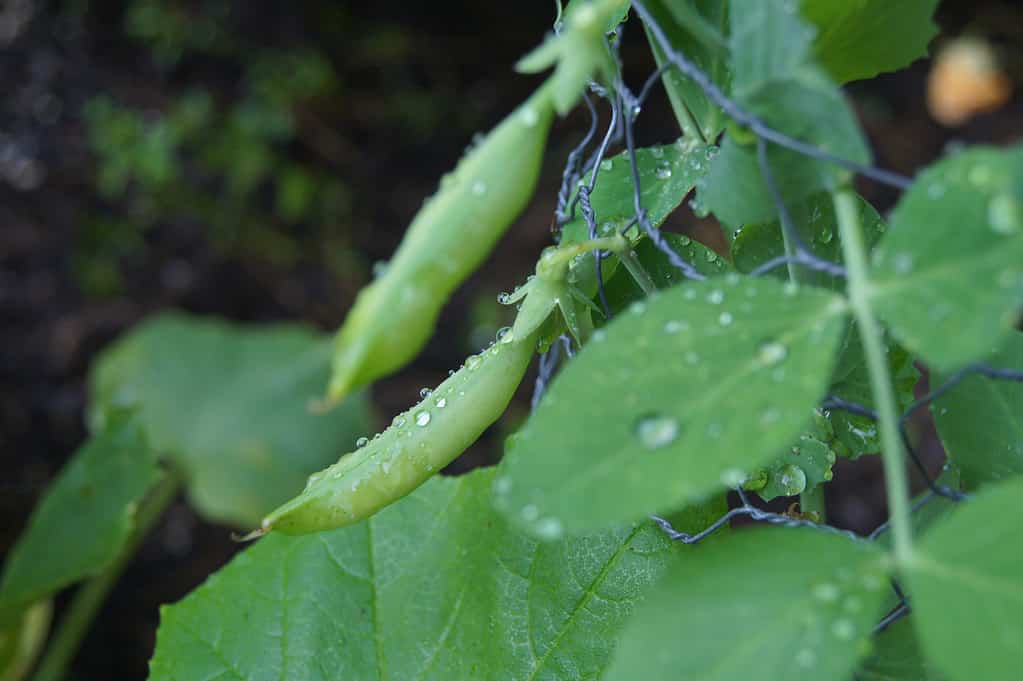
While there are many types of peas available, one of the time-tested favorites is the sugar snap pea.
©iStock.com/PierceHSmith
Fava Beans
If you like lima beans, you will like fava beans (Vicia faba). And they make an excellent choice for cooler summer regions. Sow the seeds about 1 inch deep and space them 6 inches apart in well-draining soil. Fava beans prefer full sun but can tolerate partial shade on occasion. Water regularly to keep the soil consistently moist.
Fava beans take up to 100 days to mature. So, if you live in a colder environment with a shorter growing season, you will want to hold off until next spring before planting. But if you live in a region with a longer growing season, plant away. Keep an eye on the pods before harvesting. It is important to harvest fava beans when the pods are plump, and the seeds have reached their full size. They have a rich, buttery flavor. And they can get used in soups, stews, dips, or purees.
Chickpeas
Many people know chickpeas (Cicer arietinum) as garbanzo beans. The beans are even more interchangeable than their name. Sow this versatile legume 1 inch deep and 4-6 inches apart in well-draining soil. Chickpeas prefer full sun but can tolerate partial shade. Opt for moderate watering, allowing the soil to dry out slightly between waterings. This legume has a similar growing season as fava beans.
The key to quality chickpeas lies in the harvest. Pull them when the pods turn yellow, and the seeds are hard. Chickpeas are common in hummus, curries, stews, and salads.

Chickpeas (or garbanzo beans) are an excellent legume collection addition. Thankfully, they grow easily in the home garden.
©timquo/Shutterstock.com
Lentils
Lentils (Lens culinaris) are an easy-to-grow legume. But when you plant your seeds will directly impact their success rate. Colder climates can’t plant them in July since lentils take up to 110 days to mature. But gardeners in warmer climates can absolutely plant them in July.
Sow lentil seeds roughly 1 inch deep and space them 2-4 inches apart. Lentils tolerate partial shade but do best with full. It is also important to note you should avoid overwatering.
Harvest lentils when the pods turn brown, and the seeds have fully developed. Lentils are ideal additions to soups, stews, salads or eaten as a side dish.
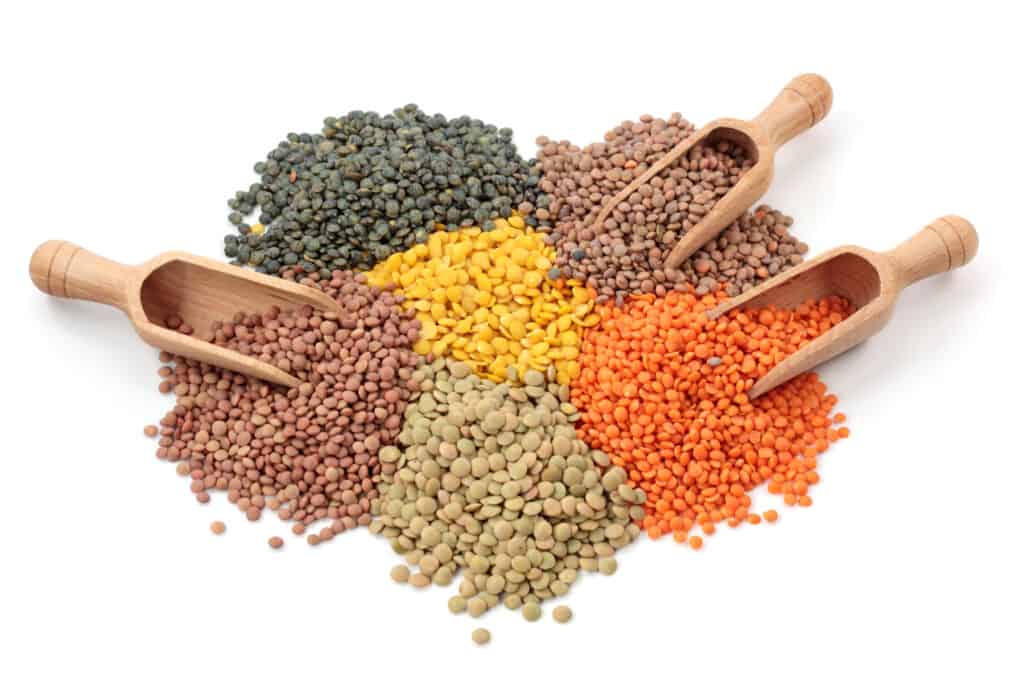
Lentils come in many different colors, and each has a unique texture. Feel free to experiment with planting different lentils in the garden.
©iStock.com/egal
Cowpeas
Cowpeas, or black-eyed peas (Vigna unguiculata), are well-suited for warm climates and can get planted as late as July. Sow the seeds 1 inch deep and space them 6-8 inches apart. These legumes require full sun, so plant them in an area that receives at least six hours of sun daily. Keep them watered regularly and provide support structures for climbing varieties.
Feel free to eat the fresh black-eyed peas around 70 days after harvest. However, you will need to wait roughly 100 days for dried beans. In colder climates, this timeframe isn’t feasible. But it works well in warmer climates.
For dried beans, harvest black-eyed peas when the pods are dry and brittle. Then shell the peas. Black-eyed peas play a prominent role in Southern dishes, soups, and stews.
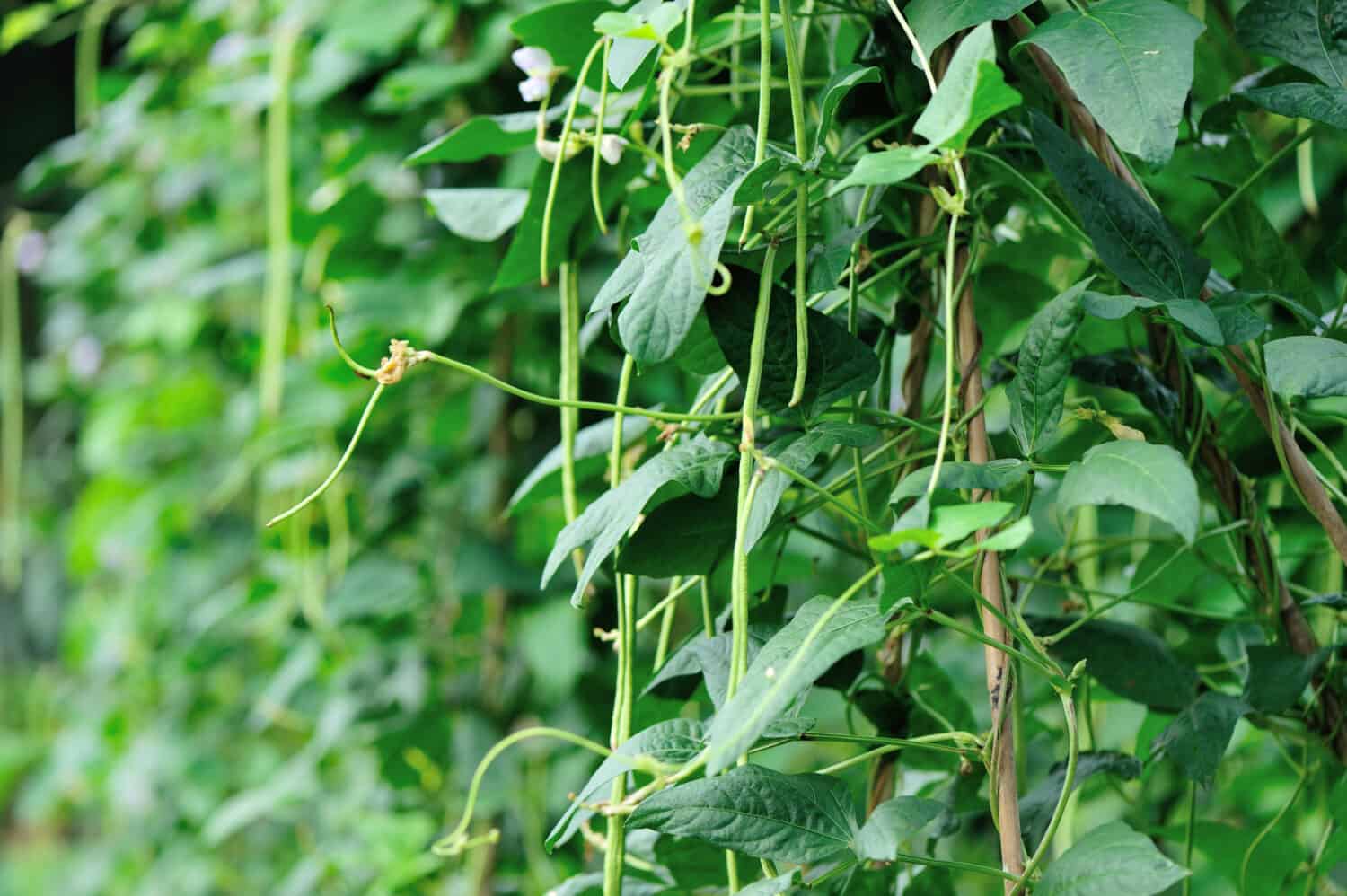
Cowpea plants produce long, thin pods. After drying on the plant, crack the pods open to reveal black-eyed peas.
©lzf/Shutterstock.com
Snow Peas
Snow peas (Pisum sativum var. saccharatum) are known for their edible flat pods and delicate flavor. This popular legume is also easy to grow. Sow snow pea seeds 1 inch deep and space them 2 inches apart. If you happen to have a climbing variety, make sure to provide ample support. Snow peas prefer cooler temperatures and thrive in full sun. Keep the soil consistently moist to support proper growth. You can expect a harvest within approximately 60 days.
Keep an eye on your snow peas before harvesting. Pull them when the pods are flat, and the peas inside are small. Snow peas make excellent additions to stir-fries and salads or are enjoyed on their own.
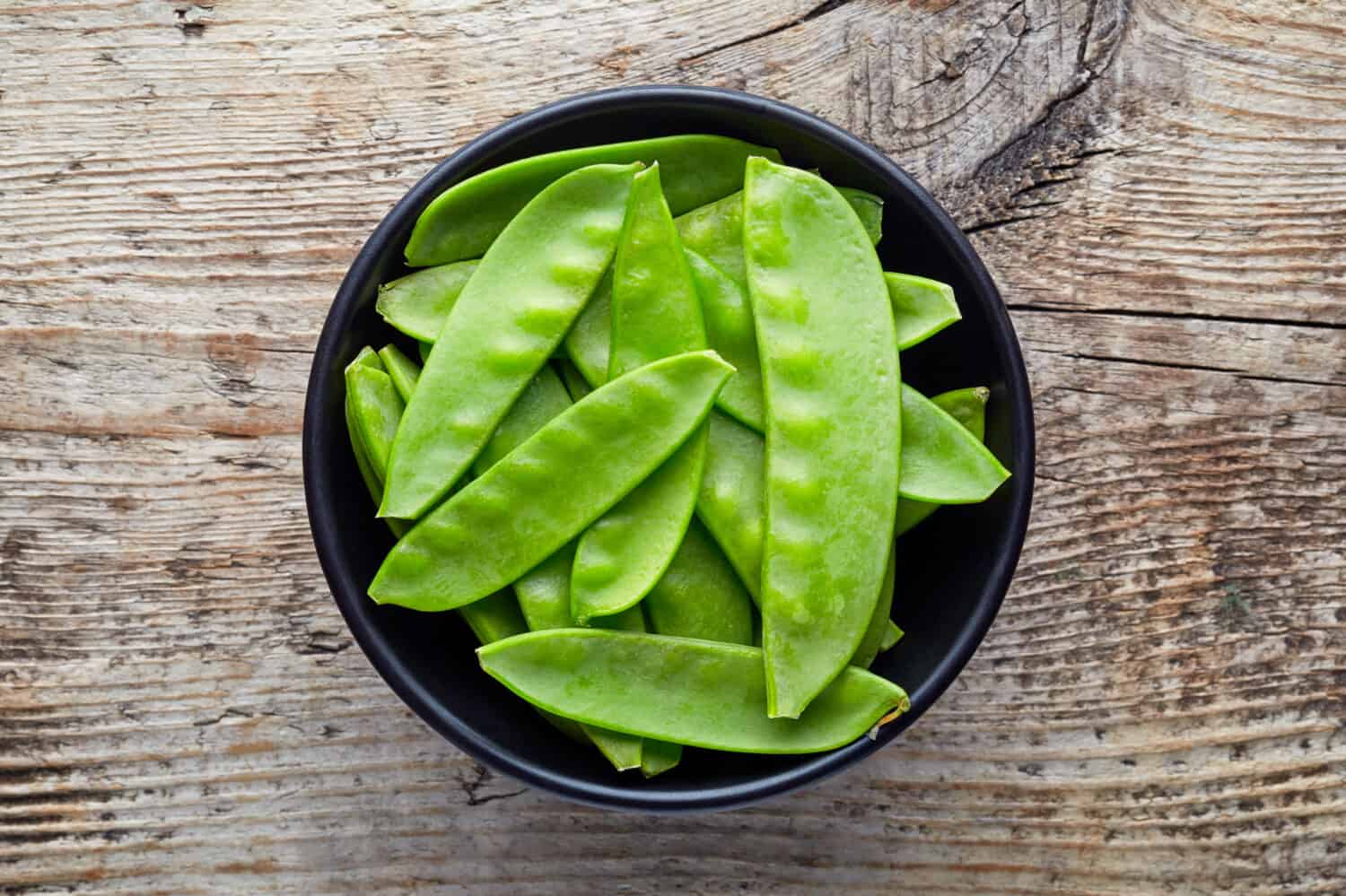
Snow peas are the perfect addition to stir-fries. (Or you can just snack on them by themselves).
©bigacis/Shutterstock.com
Edamame
Edamame (Glycine max) is a popular snack and appetizer in Asian cuisine. So, if you want to spice up your meal plan, feel free to plant some of your own. Sow edamame seeds 1-1.5 inches deep and space them 3-4 inches apart in well-draining soil. Edamame requires full sun and a medium level of watering.
Make sure to harvest the pods when they are bright green and plump. At this stage, the beans inside are still soft. They often get boiled or steamed and lightly salted. But they can also get added to salads, stir-fries, or enjoyed as a standalone nutritious snack.

Edamame pods are slightly fuzzy. But the inside are absolutely delicious and make a nutritious addition to any meal.
©iStock.com/4kodiak
The photo featured at the top of this post is © Shulevskyy Volodymyr/Shutterstock.com
Thank you for reading! Have some feedback for us? Contact the AZ Animals editorial team.







